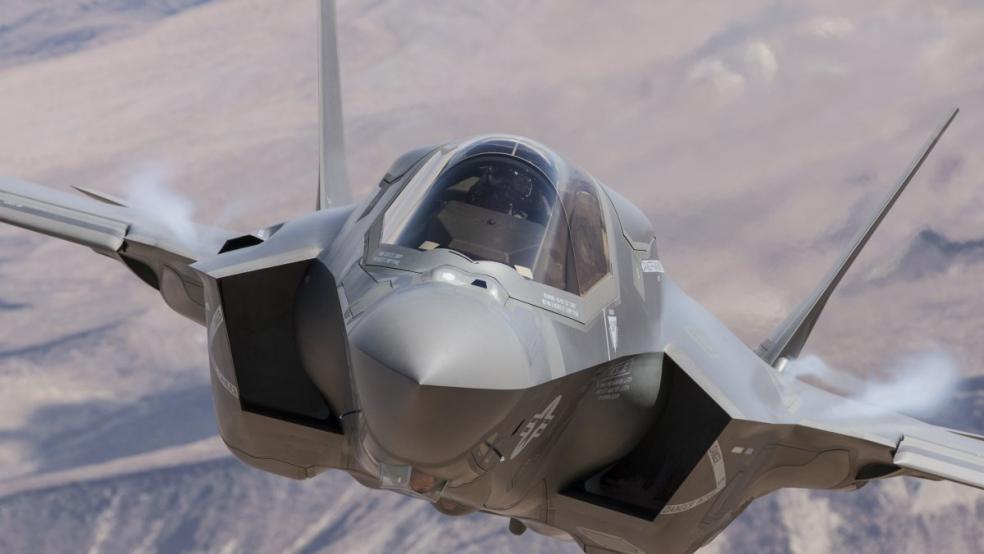The first F-35 Joint Strike Fighter assembled outside the U.S. made its inaugural flight on Monday.
Italy’s conventional takeoff and landing aircraft, dubbed the AL-1, is the first such jet built overseas. All previous F-35 aircraft have been built at Lockheed Martin’s Fort Worth production hub in Texas. The Italian F-35A/AL-1 successfully completed an 88-minute flight out of Cameri Air Base, about 60 miles north of Turin.
Related: The $1 Trillion Question for the F-35: Is the U.S. Buying an Inferior Plane?
The aerial debut was the “first-ever F-35 flight outside the United States,” Lockheed said in a statement.
The jet was assembled at a plant in Cameri that is owned by the Italian government and operated by the firm Finmeccanica.
While the maiden voyage may not be on par with the Wright Brothers’ first flight at Kitty Hawk, it marked a milestone for the nearly $400 billion F-35 effort, which has been plagued by production delays and cost overruns that have helped make it the most expensive weapons program in U.S. history.
A bad showing would have been an embarrassment for the F-35 program, especially since Rome plans to buy 90 Joint Strike Fighters for its air force and navy.
Related: Marine Corps Declares Its Problem-Plagued F-35 Ready for Combat
Several countries besides the U.S. and Italy have contributed to the cost of developing the F-35, including Australia, Great Britain, Canada, Denmark, the Netherlands, Norway and Turkey.
The test flight was the latest in a string of good news for the F-35 program.
In July, the Marine Corps declared its first squadron of F-35B jets ready for combat, and just last week the Air Force received its first pair of operational F-35A aircraft.
Earlier this summer, incoming Joint Chiefs of Staff chairman Gen. James Dunford indicated to the Senate Armed Services Committee that the Defense Department was reviewing the total projected purchase of 2,443 aircraft for the U.S. military.
However, Pentagon press secretary Peter Cook recently dismissed that idea.
“We’re not making any formal evaluation or revisit to those objectives at this particular moment in time,” he said during a press briefing in August.
Still, Cook didn’t close the door entirely.
“With all programs going forward … every program is going to be reviewed,” he told reporters. “Obviously, the budget situation here in Washington will have a big impact on that, but there is nothing at this point to indicate any formal review of this number. But there will be the standard budget review of all programs going forward to FY 17.”





